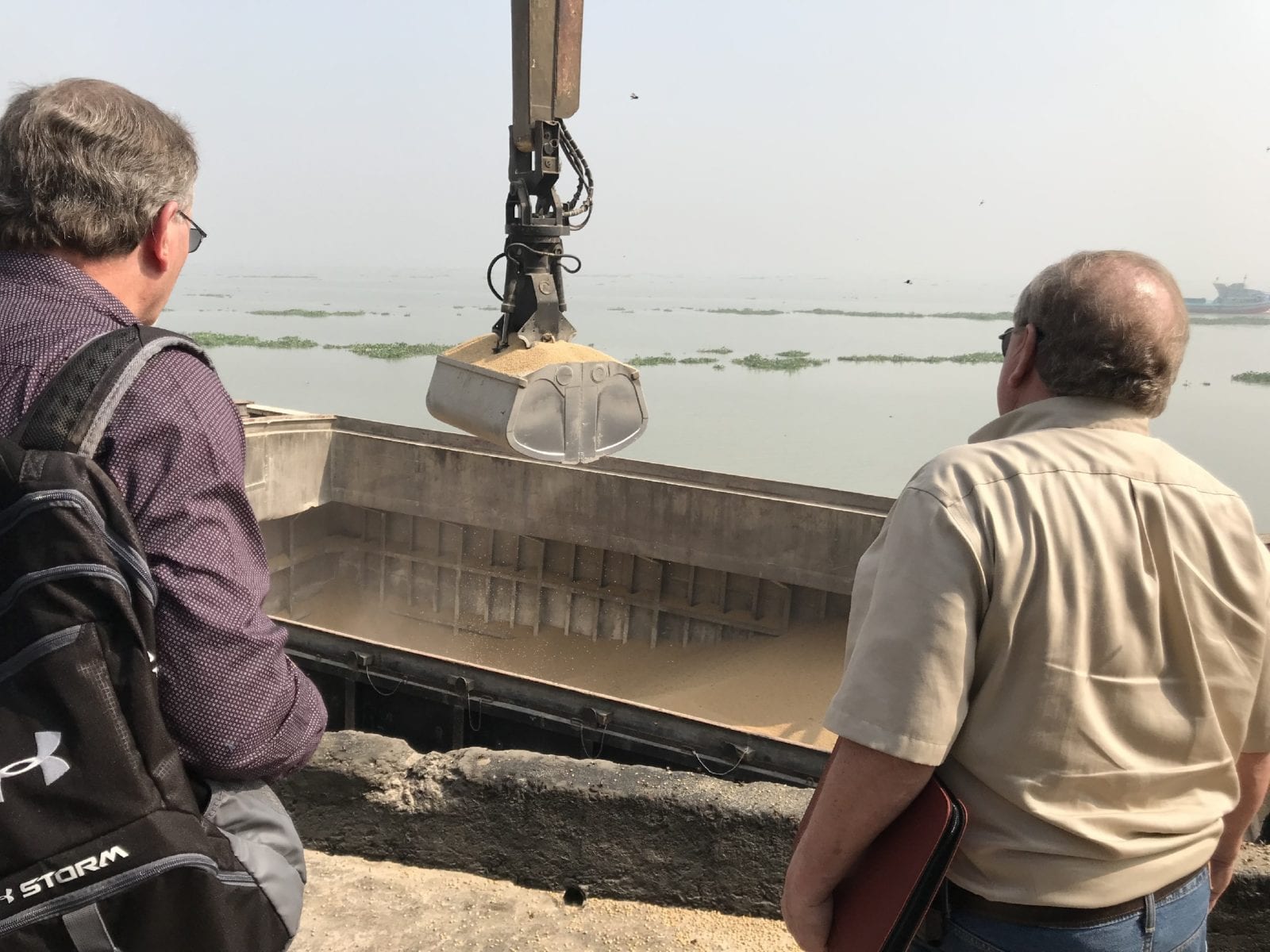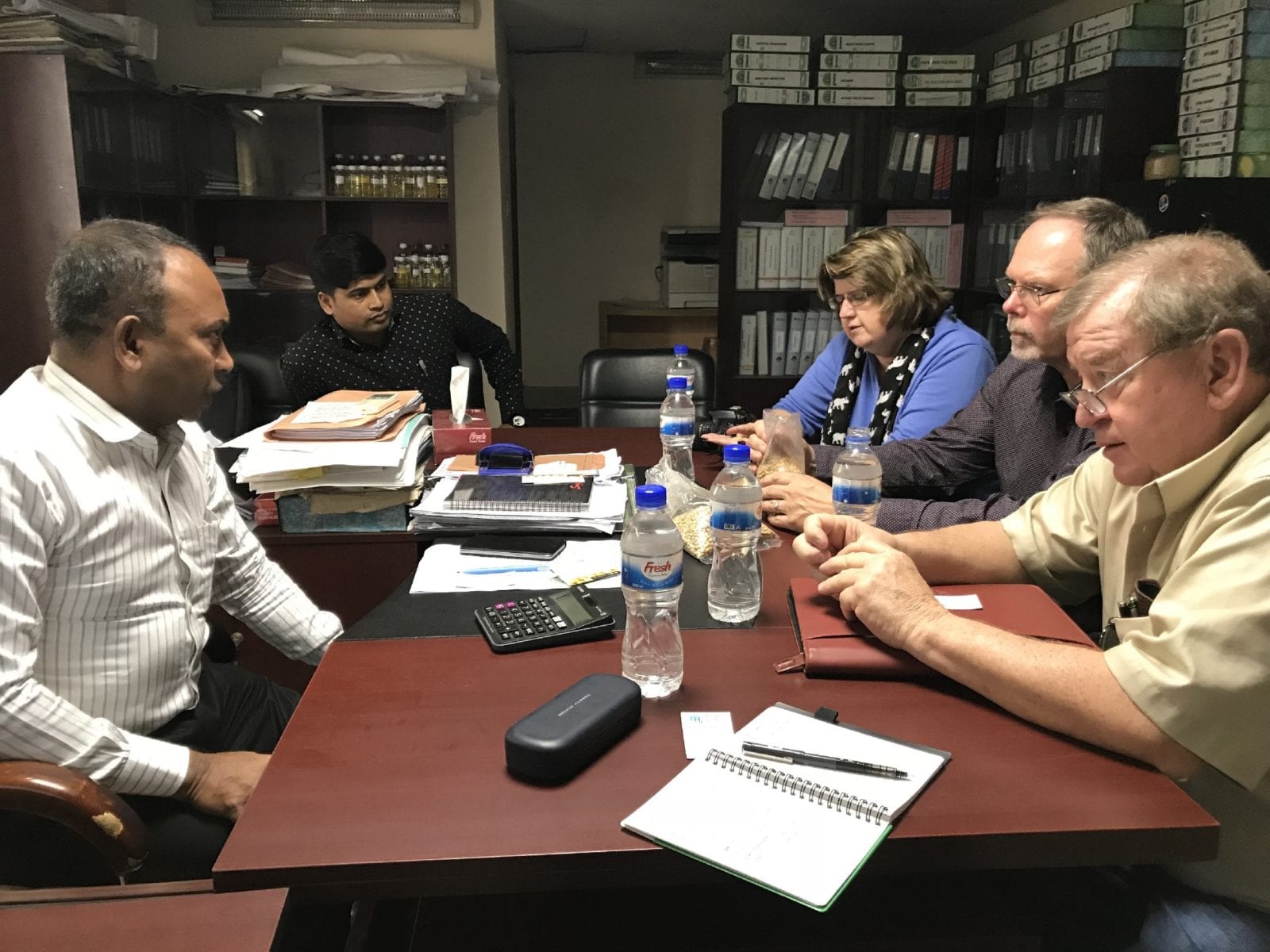U.S. Soybean Farmers Meet with Bangladesh’s Soy Crushing and Poultry Industries
- Category:
- Animal Utilization
- General News

Continuing their market visit and the market assessment mission in the Asia Subcontinent (ASC) region, John Motter, chairman of United Soybean Board’s (USB) Strategic Management Committee and immediate USB Past Chairman, and Monte Peterson, USSEC and American Soybean Association (ASA) director, traveled to Dhaka, Bangladesh to meet with leading poultry and soy crushing industry firms.
The U.S Soy team, which included the two grower leaders along with Pam Helmsing, USSEC Acting Regional Lead – ASC; Vijay Anand USSEC Deputy Regional Lead – ASC; and Masum Reja, USSEC - Country Representative – Bangladesh, met with Moshiur Rahman, Managing Director of the Paragon group of companies to discuss the current status and future opportunities in Bangladesh’s poultry segment. Mr. Rahman was very optimistic on the growth of the poultry industry, stating that they witnessed a steady growth of 15 to 20 percent year to year.Change in life style, the need to be better nourished, and growing income were drivers for this growth. Mr. Rahman stated that the feed mills in Bangladesh, which produce about 3.5 million tons of poultry and aqua feeds annually, are expanding rapidly in response to market demand.
The poultry industry is the major consumer of U.S. soybean meal imported or produced in the country. According to the U.S. Department of Agriculture (USDA), soybean meal consumption in Bangladesh grew from 831 thousand metric tons (TMT) in 2013/14 to 1,324 TMT in 2016/17. Mr. Rahman is also the President of the Feed Industries Association of Bangladesh (FIAB) and the Convener for the Bangladesh Poultry Industry Coordination Committee and influences major policy and trade decisions in the country.
The U.S. Soy team also visited two large crushing firms in Bangladesh, Meghna and Citi Groups. Together, the two plants crush 4,200 MT of soybeans per day and rely heavily on U.S soybeans along with a few other new crushers that have started operations in the country. According to USDA, 939 TMT of U.S soybeans were imported into Bangladesh in 2016/17 accounting for an 85 percent share for U.S Soy in total beans imported. Meal produced by these plants is sold to local poultry feed companies and the oil is refined, packaged, and marketed locally. Both firms are in an expansion mode with each setting up new facilities of 5000 MT per day, which would be commissioned in 6 to 8 months.
The team toured the Meghna crushing plant and witnessed the soybean unloading facility by the river with the help of Md. Emdadul Haque, General Manager. The Deputy Managing Director Mohd. Jashim Uddin expressed his deep satisfaction with U.S. soybeans, telling the U.S. Soy delegation about the superior quality and the consistent products they were able to derive from their process. They also commented that oil yield is higher from U.S. soybeans and the quality of lecithin produced has gained better acceptance among customers. The team also had discussions with top management of the Citi Group, including Fazlur Rahman, Chairman and Managing Director, and Md. Imran Uddin, Director – Planning and Business Development about U.S. soybeans and their future expectations from U.S. Soy farmers.
Mr. Motter and Mr. Peterson examined U.S. soybeans at both locations and gave their recommendations and assurances for future business.





